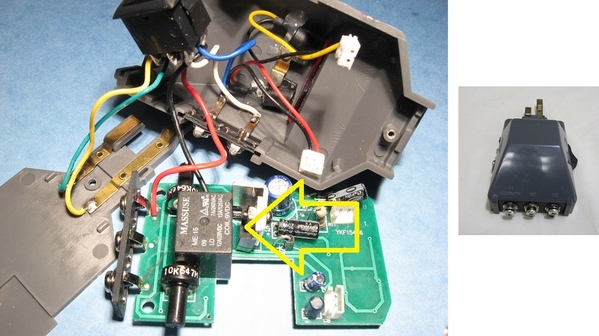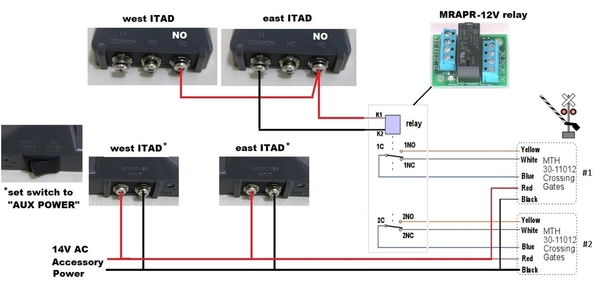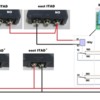I am trying to wire up two sets of RailKing Crossing Gates using ITAD and I cannot determine if I can use two ITAD's on each track crossing so that the gates drop and the lights blink when activated by trains running in either direction. I have enough ITAD's to place in both directions, but I have not seen any wiring instructions. I have reviewed Lionel's Advanced Wiring instructions for their 153IR devices and they show the need for a diode and a 12 volt DC relay to make their multi wire (3 or more wires) crossing gates work in both directions.
Anyone have a diagram I can follow? Do i need diodes and relays with the MTH ITAD's?
Thanks in advance for your help.
Mike










